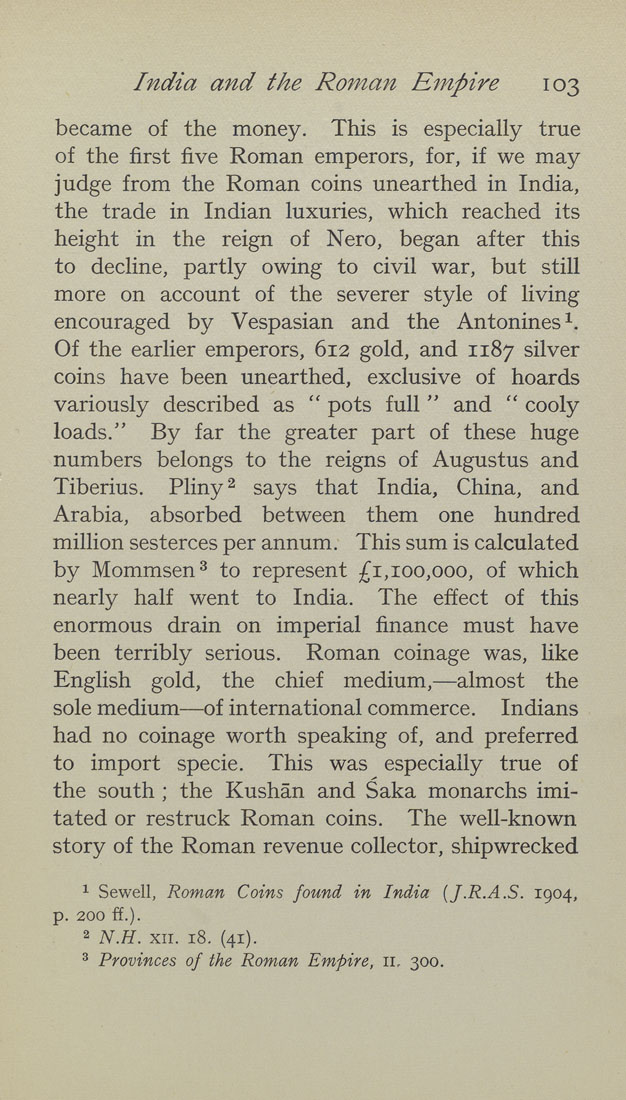India and the Romajt Empire 103
became of the money. This is especially true
of the first five Roman emperors, for, if we may
judge from the Roman coins unearthed in India,
the trade in Indian luxuries, which reached its
height in the reign of Nero, began after this
to decline, partly owing to civil war, but still
more on account of the severer style of living
encouraged by Vespasian and the Antonines^.
Of the earlier emperors, 612 gold, and 1187 silver
coins have been unearthed, exclusive of hoards
variously described as '' pots full " and " cooly
loads." By far the greater part of these huge
numbers belongs to the reigns of Augustus and
Tiberius. Pliny ^ says that India, China, and
Arabia, absorbed between them one hundred
million sesterces per annum. This sum is calculated
by Mommsen^ to represent £1,100,000, of which
nearly half went to India. The effect of this
enormous drain on imperial finance must have
been terribly serious. Roman coinage was, like
English gold, the chief medium,—almost the
sole medium—of international commerce. Indians
had no coinage worth speaking of, and preferred
to import specie. This was especially true of
the south ; the Kushan and Saka monarchs imi¬
tated or restruck Roman coins. The well-known
story of the Roman revenue collector, shipwrecked
^ Sewell, Roman Coins found in India {J.R.A.S. 1904,
p. 200 ff.).
2 N.H. XII. 18. (41).
^ Provinces of the Roman Empire, 11. 300.
|








